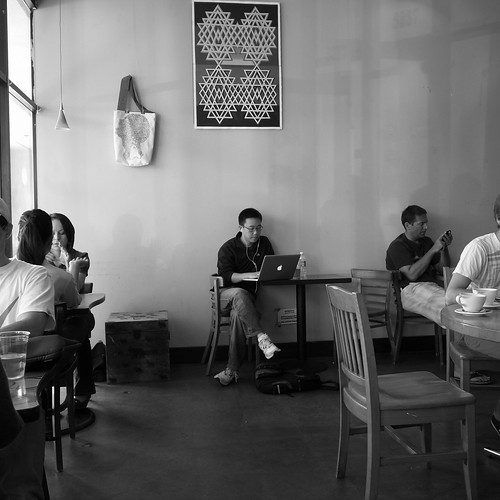Traditional journalism has long surpassed its peak in what’s now considered ‘old media,” but who are the real traditional journalists?
It can be argued that rather than a decline in old media and a birth of new, what’s really occurring in today’s fast-pace, technologically advanced society is a reversion to traditional methods of spoken news. It should be considered — to a certain extent — more of a rebirth of the true roots of journalism as we know it; a renaissance.

A man surfs the internet at a coffee house. 200 years ago, coffee houses were used for spoken news presentations.
Word-of-mouth dominated the news atmosphere in times prior to the 18th and 19th centuries, seen most vividly in the mid- to late 17th century in English and French coffeehouses. Townsfolk would often convene and converse about the latest news from the city. It wasn’t always accurate but at the time it was the most reliable source of news people could get.
Today, aside from television, which has dominated media intake for the past 50 to 60 years, a majority of people get their news by word-of-mouth. According to a recent study by the Pew Research Center and the Knight Foundation, nearly seven out of 10 people say that an eradication of the local newspaper would not hinder their abilities to keep up with news about their communities.
In a recent story, Washington Post reporter Paul Farhi emphasizes the importance of spoken news in our everyday interations as well as outlines the data found in the study.
“The role of human-to-human communication in news is both obvious — people have always told stories to one another — and revelatory, primarily because data and studies have long focused on the news media, not on all of the ways news actually gets around,” says Farhi.
Because Twitter, Facebook and various other forms of social media dominate our interaction with friends, family and coworkers, news is truly ubiquitous, and you don’t even have to hear it from a newspaper or radio show to know it happened. The immediacy and efficiency of spoken news in the form of online interactions have plunged this new media into a realm of spoken news reminiscent of our coffeehouse-dwelling ancestors.

Leave a response